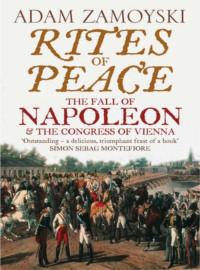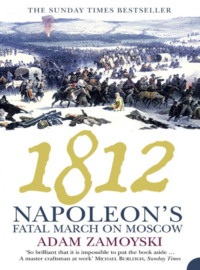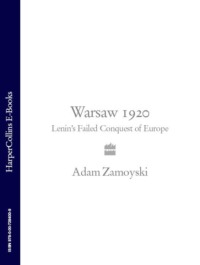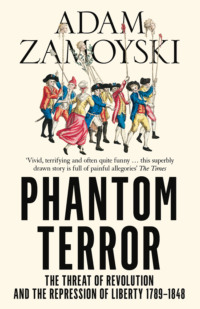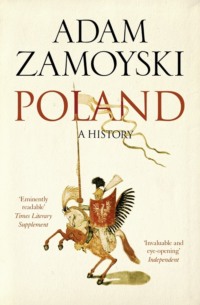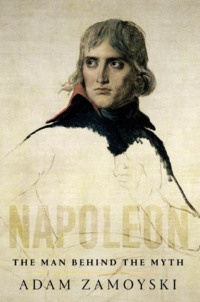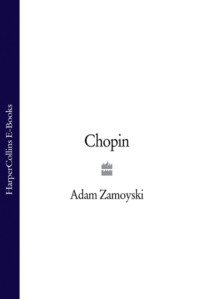
Полная версия
Poland: A history
Otto had come not only to pray at the tomb of his saintly friend. He needed to assess Poland’s strength and establish its status within the Holy Roman Empire. He was impressed by what he saw, and decided the country must be treated not as a tributary duchy, but as an independent kingdom, alongside Germany and Italy.

As soon as Otto was succeeded by the less exalted Henry II this independence came under threat. Neither German nor Bohemian raison d’état accommodated the idea of a strong Polish state, and a new German offensive was launched, supported by Bohemia on the southern flank, and some pagan Slavs in the north. Bolesław defeated Henry in battle. He then brought diplomatic pressure to bear on Bohemia by a timely alliance with the Hungarians, and on Henry himself by arranging a dynastic alliance with the Palatine of Lorraine. Pressed from all sides, Henry was obliged, at the Treaty of Bautzen (1018), to cede to Poland not only the disputed territory along the Elbe, but the whole of Moravia as well.
Like his father, Bolesław was not a man to rest on his laurels, and when an opportunity for action arose, he took it. He had married his daughter to Prince Svatopolk, ruler of the Principality of Rus. When Svatopolk was ousted by rebellion from his capital in Kiev, Bolesław intervened on his son-in-law’s behalf. He took the opportunity of annexing a slice of land separating his own dominions from those of Kiev, the area between the rivers Bug and San, which rounded off his own state in the east.
The Polish realm was now large by any standards, and its sovereign status seemed beyond doubt. To stress this, in the last year of his life, 1025, Bolesław had himself crowned King of Poland in Gniezno Cathedral. But his death revealed that the empirebuilding policies of Mieszko and Bolesław had outstripped the means of the nascent state, which could not digest their conquests at this rate. At the same time, strong regionalist tendencies made themselves felt with the accession of Bolesław’s son Mieszko II.
While he attempted to hold together his dominions, jealous brothers obtained the support of Kiev by promising to cede the lands between the Bug and San rivers, and that of the Empire by offering to give back areas annexed by Bolesław. They had little difficulty in toppling Mieszko, and he had to flee the country in 1031. The unfortunate man was then set upon by some Bohemian knights who, according to the Polish chronicler, ‘used leather thongs to crush his genitalia in such a way that he would never sire again’. Although he managed to return and regain his throne, Mieszko died in 1034, leaving the country divided.
His son, Kazimierz I, was hardly more successful, and he too had to flee when civil war broke out. Duke Bretislav of Bohemia took advantage of this to invade. He seized Gniezno, whence he removed not only the attributes of the Polish crown, but also the body of St Adalbertus (Wojciech in Polish), which put in jeopardy the very survival of Poland as an independent unit.
At a moment when boundaries were theoretical, cultural distinctions imperceptible and concepts of nationhood in their infancy, the first Czech chronicler, Cosmas of Prague, and his Polish contemporary the monk Gallus, both saw the other nation as the worst enemy of his own.
This raises the question of what we mean by terms such as ‘Poland’ at this point in history, let alone by ‘Poles’, ‘Germans’ and ‘Czechs’. Frontiers, such as they were, were fluid, changing each time one ruler or another asserted his rights by force. Ethnic distinctions did not impose any deeper loyalty, and Germans fought amongst themselves more often than they fought Slavs, while the Slavs were constantly at war with each other. Nor were they well defined. When the Germans occupied the lands up to the Oder, they absorbed so much Slav blood that the population of what would become Brandenburg, the cradle of German racial myths, was heavily mixed. When the area later known as Mecklenburg became part of the German world, the Slav ruling classes became the German aristocracy. On the other hand, the rulers of Poland repeatedly intermarried with Germans.

Fig. 1 The early Piast Kings. (Only the more important members of the dynasty are shown. Dates given are those of reigns. The family tree continues on pages 24-5.)
The underlying conflict that ranged the Poles against Bohemia and the Empire was over the question of Poland’s position in the Christian world. For a century and a half after Otto III had sanctioned Bolesław the Brave’s royal ambitions, Poland’s status remained uncertain, with the Empire repeatedly trying to place it in the position of a vassal state, and Poland struggling to preserve its sovereignty. The ebb and flow of this struggle is reflected in the way Polish monarchs are variously referred to as dux, princeps or rex in contemporary Western sources. In spite of its own internal dissensions and wars, the Empire was the theoretical arbiter on such questions. The Polish monarch could strengthen his position by building up his own power, by seeking the support of other countries and by alliance with the Pope against the Emperor. The problems involved are clearly illustrated by the hundred years after the death of Kazimierz I in 1058.
After regaining his throne in 1039, Kazimierz had made Kraków his capital. Gniezno, the centre of Wielkopolska (Greater Poland), the land of the Polanie, needed a strong boundary along the Oder and Polish domination of Pomerania in the north and Silesia in the south. Kraków, the capital of Małopolska (Lesser Poland), was likely to be more affected by what happened in Kiev than what was going on in Pomerania. Both Kazimierz, who was married to the sister of the Prince of Kiev, and his son Bolesław II, the Bold, who also married a member of that royal house, had turned their eyes to the east and Bolesław occupied Kiev twice on his uncle’s behalf. At the same time, Hungary was emerging as an important factor in Polish affairs. It was an obvious ally against both Bohemia and the Empire. It was also an element in a great web of papal diplomacy aimed against the Empire, stretching from Poland to Spain. One of the benefits of joining this alliance was that the Pope granted Bolesław a royal crown, with which the latter crowned himself in 1076.
The fiery king’s friendship with the Papacy came to grief only three years after this event. Less than a century after his namesake had made such mileage out of a saint, Bolesław lost his throne over one. A number of magnates, including Stanisław, Bishop of Kraków, had started to plot against him. When Bolesław uncovered the conspiracy he reacted with violence, putting to death several of the conspirators, including the Bishop. This aroused widespread indignation, and the unfortunate King was obliged to abandon his throne to his brother Władysław Herman. The killing of the Bishop (who would be canonised in 1258) undermined the prestige of the Polish dynasty, and in 1085 the Emperor Henry IV allowed the Duke of Bohemia to crown himself King of Bohemia and Poland. Although this was a purely symbolic act, it was an affront to Władysław.
At home, Władysław was unable to curb the rising power of local lords, who stipulated that Poland should be divided between his two sons at his death. But when this came, in 1102, the younger son, Bolesław the Wrymouth, drove his brother out of the country. As his name suggests, he was an ugly man, but he was extremely capable, and quickly earned the respect of his subjects, in spite of his determination to rule with a strong arm. He was aided in this by his military prowess. In 1109 he won a victory over the Emperor and the Duke of Bohemia at the Battle of Psie Pole near Wrocław, forcing them to renounce their claims to Polish territory. He also invaded Pomerania, where a gradual German incursion had over the years weakened Polish influence. He recaptured the area up to and well beyond the Oder, as far as the island of Rügen.

The last years of his reign brought defeat during expeditions in support of his Hungarian allies, provoking renewed Bohemian invasions. A group of nobles took advantage of the situation, forcing Bolesław to make a political testament which carved Poland up into duchies. Each of his five sons was to rule over one of these. Pomerania, whose dukes were closely related to but not of the main Piast line, was given equal status. The eldest son, Władysław, was to reign in the small but theoretically paramount duchy of Kraków as well as his own and exert suzerainty over the others. Thus when Bolesław the Wrymouth died in 1138, the country embarked on a political experiment designed to compromise between regionalist tendencies and an underlying sense of kinship and political unity.
Ironically, considering the frequent interruptions in the succession and the consequent fragmentation of the realm, this sense of unity was based primarily on the Piast dynasty. They had established over eighty castle-towns by the end of the eleventh century and endowed market towns with royal charters granting rights and protection. They encouraged the replacement of barter with their own coinage, and provided the security necessary for the development of international trade routes through the country. Cities such as Kraków, which became the capital in 1040, Sandomierz, Kalisz, Wrocław, Poznań and Płock flourished.
Another unifying element was the Church, which was instrumental in the spread of new technologies and of the Romanesque style in architecture. It was also central to the spread of culture and education, providing as it did technical expertise, administration and schooling for would-be priests and young noblemen. The arrival of the Benedictines, whose monastery at Tyniec on the Vistula dates from the second half of the eleventh century, and later of the Premonstratentian and Cistercian orders, added impetus to this process. Most of the cathedrals had schools attached to them, and through the institution of the Church it was possible for Polish students to travel to other counties in search of learning. A local Latin chanson de geste made its appearance, and between 1112 and 1116 the first Polish chronicle was written in Kraków by Gallus, probably a Benedictine monk from Provence.
A distinction must be drawn between the great impact of the Church’s educational and even political activities, and the con—siderably lesser one it produced at the strictly religious level. Pagan cults survived the official conversion of the country in 966, and the next two centuries witnessed several major revivals, during which churches were burnt and priests put to death. The pagan survivals were particularly strong in areas such as Pomerania, which maintained a measure of autonomy in the face of pressure to submit to either Polish or Imperial overlordship.
The Church could do little about this in the face of a general lack of zeal, which is well illustrated by the Polish response to Rome’s summons to the Crusades. Apart from Prince Henryk of Sandomierz, few heeded it. Duke Leszek the White explained in a long letter to the Pope that neither he nor any self-respecting Polish knight could be induced to go to the Holy Land, where, they had been informed, there was no wine, mead, or even beer to be had. There were other reasons for staying at home, since there were troublesome pagans on Poland’s own frontiers in the shape of the Prussians and Lithuanians. But little was being done to convert them, and this lack of zeal was characteristic. A major motive propelling European knights across the seas to fight crusades in Palestine and the Baltic (and settlers to follow them) was the population explosion of the Middle Ages which produced overcrowding in some areas. The far from populous Poland felt no such need for expansion, and her rulers welcomed the immigration of Jews, Bohemians and Germans who provided useful services.
The realm continued to fragment after the death of Bolesław the Wrymouth in 1138 had transformed it into five duchies. The eldest of his sons, Władysław, made an attempt at reuniting it from his position as ruler of Kraków, but he came up against the resistance not only of his brothers but of most of the local lords as well. Over the next hundred years successive dukes reigning in Kraków proved less and less able to enact the formal suzerainty which went with the position, and eventually abandoned the attempt altogether. The various branches of the royal family established local dynasties, in some cases subdividing the original five duchies of Wielkopolska, Mazovia-Kujavia, Małopolska, Sandomierz and Silesia into smaller units in order to accommodate their offspring.
There was more to such fragmentation than sibling rivalry. Regional lords and the larger towns yearned for autonomy, and the trend towards devolution went hand in hand with a demand for wider power-sharing. Władysław of Wielkopolska, also known as Spindleshanks on account of his bony legs, made a valiant attempt to reassert his authority as Duke of Kraków, but powerful barons forced him to grant them substantial prerogatives by the Privilege of Cienia in 1228, thirteen years after a similar document, the Magna Carta, had been extorted from a king of England.
There was nevertheless a marked difference between the barons of England and the magnates of Poland. The power of an English or French lord at this time was held from the crown and fitted into a system of vassalage. This feudal system was never adopted in Poland, except with respect to some nobles who had migrated from western Europe. This set Polish society apart from the rest of the Continent in fundamental ways.
The highest estate were the gentry, the szlachta, who inherited both status and land. They were obliged to perform military service for the king and to submit to his tribunals, but they were the independent magistrates over their own lands. They upheld the customary laws of the country, the Ius Polonicum, based entirely on precedent, and resisted attempts at the imposition of foreign legal practices by the crown. Beneath the szlachta were a number of estates, including the włodyki, who were knights without noble status, and the panosze, who formed a kind of yeoman class. The peasants were mostly free and able to rise to a higher status. While the land they tilled belonged to the sovereign, they enjoyed defined rights. A small number were enserfed, but these gained greater personal freedom during the first half of the thirteenth century, and were not generally tied to the land as in western Europe. The adoption of the three-field system at the beginning of the thirteenth century and the agrarian boom it brought about differentiated between those who had land and those who did not. Those who did grew richer, those who did not were revealed to have nothing to offer except their labour. Thus while they gained greater personal freedom and legal protection, the poorer peasants were caught up in the mesh of economic bondage.
The cities were, literally, a law unto themselves. Most of them had been either founded by or endowed with special charters which gave them a measure of autonomy. As they grew, they attracted foreigners—Germans, Italians, Walloons, Flemings and Jews—whose presence served to increase this independence. The Germans imported with them the Ius Teutonicum, which was first adopted for Silesian towns in 1211, and subsequently, in the modified form of ‘Magdeburg Law’, for others all over Poland. These laws, which regulated criminal and civic offences and all trade practices, meant that the area within a city’s walls was both administratively and legislatively in another country from that lying without. The citydwellers evolved as a separate class having nothing in common with the others. The same was true of the growing Jewish community, which was granted a royal charter by Bolesław the Pious in 1264, the Statute of Kalisz. This recognised all Jews as servi camerae (servants of the treasury) and afforded them royal protection. It was the first of a number of such privileges which were to turn them into a nation within a nation.
Since there was no framework of vassalage there were no natural channels for the exercise of central authority. Royal control therefore depended not on a local vassal as elsewhere in Europe, but on a functionary appointed by the king. He was known by his function, and his title of Castellan (Kasztelan) derived from the royal castle from which he exercised judicial, administrative and military authority on the king’s behalf. There were over a hundred of these castellans administering the Polish lands by 1250, but their importance waned along with central authority when the country was divided. In terms of power, they began to be superseded by the ministers of the individual dukes, the Palatines (Wojewoda).
This divergence from European norms is significant. Unlike Bohemia, which had faced similar challenges and choices, Poland had not been fully absorbed into the framework of European states. One consequence of this was that it remained more backward. But it maintained a greater degree of independence. And while it was divided into duchies it remained more uniform and cohesive as a society than many others, because it was not subjected to the mixed overlordships that placed large tracts of geographical France under the sovereignty of the king of England, areas of Germany under that of the French dynasty, or Italy at the mercy of a succession of Norman, French and German warlords. It was probably this that ensured the survival of Poland as a political unit.
TWO Between East and West
In 1241 the horde of the legendary Genghis Khan, now commanded by his grandson Batu, broke over eastern Europe in a great wave. It overran and put to fire and sword the principalities of southern Russia and then divided into two. The larger force swept into Hungary, the other ravaged Poland. The knighthood of Małopolska gathered to face it at Chmielnik, but were swamped and massacred. The Duke of Kraków, Bolesław the Chaste, fled south to Moravia.
The Tatars sacked Kraków, then rode on westwards into Silesia. Here Duke Henryk the Pious had massed all his own forces, as well as those of Wielkopolska, a contingent of foreign knights, and even the miners from his goldmines of Złotoryja. On 8 April 1241 he led them out of the city of Legnica to face the oncoming Tatars. His forces were defeated and Duke Henryk himself was hacked to pieces.
Happily for western Europe, the Tatars veered south to rejoin their brothers in Hungary and there news reached them of the death of their Khan Ugedey. They abandoned their westward advance and rode back whence they had come. Although they never again attempted a conquest of Europe, they would keep the whole of Russia under their yoke for the next three centuries and continued to harass Poland. In 1259 they sacked Lublin, Sandomierz, Bytom and Kraków. They returned in 1287, wreaking similar devastation. The horror of these raids was vividly captured in chronicle, legend and song, and is kept alive to this day in the hourly trumpet-call from the tower of St Mary’s Church in Kraków, which breaks off in the middle to commemorate the Tatar arrow that cut short the medieval trumpeter’s call. And it established the barbaric eastern infidel as a bogeyman in the Polish political mind.
The Tatar incursions showed up the vulnerability of a country divided. Although there was a community of interest, there had been no coordination of action, and regional militias were defeated one by one. Just as the Tatar threat died away, this vulnerability was beginning to be demonstrated on the other side of the country, where the other great bogeyman of modern Polish history was born, swaddled in steel marked with the black cross.
At a time when Poland had already been a Christian state for two hundred years, much of the southern and eastern Baltic coastline was still inhabited by pagans and was the scene of a fierce struggle carried on by Denmark, the Scandinavian kingdoms, Brandenburg and the Polish Dukes of Gdańsk-Pomerania and of Mazovia. Denmark, Brandenburg and other German princes vied with each other to conquer the area which would be known as Mecklenburg, with its valuable port of Liubice (Lübeck). Further east, where the Baltic coast curves northwards, the Danes and Scandinavians were making inroads into the lands of the Lithuanians, the Latvians, Lettigalians and Semigalians, and the Curonians. In between, the Poles battled against the Prussians, another Baltic people. The motives were the desire for land and trade, thinly disguised as missionary by local bishops who could not afford to have the Church excluded. This changed when St Bernard of Clairvaux started preaching the crusade all over Europe.
It was he who persuaded Pope Alexander III to use north European crusaders in northern Europe rather than the Middle East, and to issue, in 1171, a bull granting the same dispensations and indulgences to those who fought against the heathen Slavs or Prussians as to those fighting the Saracens. The advantage of a crusade was that any local duke who launched what was in effect a private war against his enemies could, by making an arrangement with his bishop, recruit foreign knights who would come and fight for him as unpaid soldiers. And the fruits of this crusade whetted the appetites of Danes, Poles and Germans alike. Although the first northern crusade was a failure, the heathen Slavs in Western Pomerania were gradually subjugated by the Germans and the Danes over the next fifty years.
Throughout the early 1200s the Dukes of Mazovia made inroads into Prussia, but this only provoked counter-raids from the Prussians. A methodical military takeover of the area was needed, and the only armies which could take up such a challenge were the military orders, the most famous of which, the Templars and Hospitallers, had proved their efficacy in Palestine. The Bishop of Riga had, in 1202, formed the Knighthood of Christ, better known as the Sword Brothers, to help him conquer and evangel—ise the Latvians. With the approval of Duke Konrad of Mazovia, the Bishop of Prussia followed suit by founding Christ’s Knights of Dobrzyn as the regular army of the Polish ‘mission’ to Prussia. But this was too small to cope with the task.
A more radical solution was called for, and so, in 1226, Konrad of Mazovia took a step whose consequences for Poland and for Europe were to be incalculable. He invited the Teutonic Order of the Hospital of St Mary in Jerusalem, known as the Teutonic Knights, to establish a commandery at Chełmno and help him con—quer Prussia. The Teutonic Knights, founded at Acre in Palestine on the model of the Templars, were attracted by the idea of a mission nearer home. They thought they had found one in Hungary, where they were given the task of holding the Tatars at bay, but King Andrew II of Hungary grew wary of their ambitions and shortly expelled them.
They could see the advantages of the Polish offer, but this time the Grand Master Hermann von Salza was determined to guarantee their future. He obtained documents from the Emperor Frederick II and a bull from Pope Gregory IX authorising the order to conquer Prussia and thereafter to hold it in perpetuity as a papal fief. Before he realised what he had let himself in for, Konrad of Mazovia discovered that the lease he had granted the order on the territory of Chełmno had become a freehold.

Hermann von Salza, who still kept his sights on the Holy Land, originally saw the Prussian theatre of operations as a sideshow. He despatched a few knights there in 1229, and a further contingent took part in a crusade into Prussia in 1232-33, preached by the Dominicans, in which several Polish dukes, the margraves of Meissen and Brandenburg, the Duke of Austria and the King of Bohemia took part, along with hundreds of German knights. The order’s involvement grew when, in 1237, it took over the Sword Brothers. And it was encouraged to take a greater interest in the area by successive Popes, whose wish to see the conversion of the pagan Balts was complemented by a desire to bring as much of northern Russia as possible into the fold of the Roman Church.




